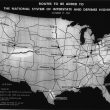Transportation department to invest $94M into projects promoting innovation, safety
As transportation technology evolves at a breakneck pace—from self-driving cars to electric vehicles—the infrastructure and innovation that supports it must evolve faster. From the American Rescue Plan Act to the Bipartisan Infrastructure Law Act, the federal government has proven itself to be a reliable partner for local governments. Most recently, a $94 million grant opportunity from the U.S. Department of Transportation seeks to jumpstart 59 projects intended to innovate transportation systems.
“Every major advancement in the history of U.S. transportation has involved technological progress,” said Transportation Secretary Pete Buttigieg about the funding, which comes through the Strengthening Mobility and Revolutionizing Transportation (SMART) Grants Program. “The investments we are making today are about fostering innovations that improve people’s day-to-day lives, making transportation safer, more reliable, more efficient, and more sustainable.”
In its inaugural 2022 year, the program received six times more interest than there was money available. This year, funding will support a variety of projects emphasizing safety, reliability, innovation and efficiency in communities across the nation, like the installation of crash cushion systems on the back of work vehicles to shield them from vehicle impacts.
Other communities will receive funding for projects focused on innovation through data integration, transit incentives, and accessibility tools, according to a statement.
“We are thrilled to see the interest in SMART (last year),” said Dr. Robert Hampshire, deputy assistant secretary for research and technology and chief science officer at the federal transportation organization. “This shows the important role this new program can play in helping support State, local, and Tribal efforts to advance technology applications.”
The statement specifically highlights the following community recipients of the grant:
- Cleveland and other cities will receive funding to demonstrate smart traffic signal technologies like automated traffic signal performance measures, and transit and emergency vehicle signal priority.
- Buffalo, N.Y., Los Angeles, Minneapolis, Philadelphia, Portland, and other cities will leverage sensors and data to better understand and improve curb management practices by allocating curb space to best serve local businesses, facilitate deliveries, and integrate with transit and active transportation.
- Communities in Maine, Colorado, and Massachusetts will focus on smart grid projects to prepare for widespread adoption of electric vehicles including cars, buses, and aircraft and ground vehicles at airports.
- Sensor initiatives will enable data collection and influence operational approaches, from a flood warning system in Harris County, Tx, to a crash detection system in Nashville, and improved safety at Seattle’s at-grade rail crossings.
- Uncrewed aircraft systems (UAS) projects in Alaska, California, and Kansas will leverage innovative aviation technology for infrastructure inspections. And projects along Virginia’s Eastern Shore and in the Mandan, Hidatsa and Arikara Nation will see similar aircraft deployed for medical package deliveries.
- The Michigan Department of Transportation and Whatcom Council of Governments will integrate sensors and data to facilitate commerce at international border crossings, strengthening supply chains, reducing delays, and minimizing congestion impacts in the Midwest and Pacific Northwest.
- Connected vehicle projects in states including Arizona, Michigan, Texas, and Utah will deploy connectivity demonstrations that focus on topics like transit prioritization and safety for pedestrians and cyclists.




















